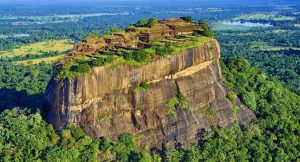Last Updated: July 25, 2019 Anil Rana
Teeming with rich historical and cultural past, Central India is a paradise for history buffs, archaeologists, architects and artists who come here from different parts of the globe. Replete with opulent palaces, majestic forts and magnificent temples; this central region of the country is where the medieval history of India carved its way. Ruled by several dynasties ranging from Chandelas and Guptas to Mughals, Marathas, Bundelas and British, you will find yourselves to be intrigued with the tales of romance, brutalities, battles, jauhars and bravery that seem to be oozing out from every inch of the monuments, standing tall for many past centuries. If you have a keen interest in history or if rich architectures and splendid art of the bygone era arouses a deep curiosity in you to explore more, come and be part of the region’s turbulent historical journey; here is a list of 15 destinations that you must cover on this trip of your lifetime.
Resplendent Fort of Gwalior

Gwalior Fort, Photo: https://goo.gl/OIvFJs
Dating back to 8th century, the impressive Gwalior Fort, perched atop of 3 km. long sandstone plateau in Madhya Pradesh, is one of the most famous historical places in central India. Ranging from the Kachchawahas, Tomars, Mughals and Marathas to British and Scindias, the fort has been the ruling seat for many dynasties in the past, presenting it with many architectural marvels that have today, become the part of its brilliant history. Besides many glorious moments, few gory instants of imprisonments, battles, love affairs and jauhars also share a chunk of the fort’s fascinating history. Today, being the most famous tourist attraction in Madhya Pradesh, it sees a footfall of uncountable tourists both, nationals and foreigners who throng here to be part of its hundreds of years old enthralling journey.

Teli ka Mandir, Photo: https://goo.gl/MJ1DrT
The fort is home to three fascinating temples out of which the ‘Teli-ka-Mandir’ is the most famous and boasts of its remarkable mix of Dravidian and Nagara styles of architecture. Dating back to the 11th century, when the fort was under the rule of the Gurjara-Pratihara dynasty, the temple is today, one of the oldest surviving structures inside the fort and is dedicated to Lord Vishnu in the form of his vahana, Garuda. The temple’s splendid architecture and elaborate carvings on its walls and doorway, are a great draw for countless visitors who throng to this place every year. Besides the ‘Teli-ka-Mandir’, the twin ‘Sas –Bahu’ temples also fascinate many travellers visiting the fort. Many would believe these temples to somewhere, be having a story associated with mother-in-law, daughter-in-law; well! that is true in some ways but, the term, ‘Sas-Bahu’ is actually derived from ‘Sahastrabahu’, a manifestation of Lord Vishnu with thousand hands, to whom one of these temples is dedicated. Talking about the mother-in-law & daughter-in-law story, it is believed that the wife of the Kachchawaha king, during whose reign these temples were built, was a keen devotee of Lord Vishnu and hence, got the temple built dedicated to thousand-armed Vishnu. Contrary to his wife, the daughter-in-law of the king was a follower of Lord Shiva and on her request, the second temple dedicated to Lord Shiva, with a similar architecture was built besides the Vishnu temple. Besides the interesting story related to these twin temples, it is the beautiful and outstanding work of the artisans on the roofs and walls of these temples that attract many visitors throughout the year.
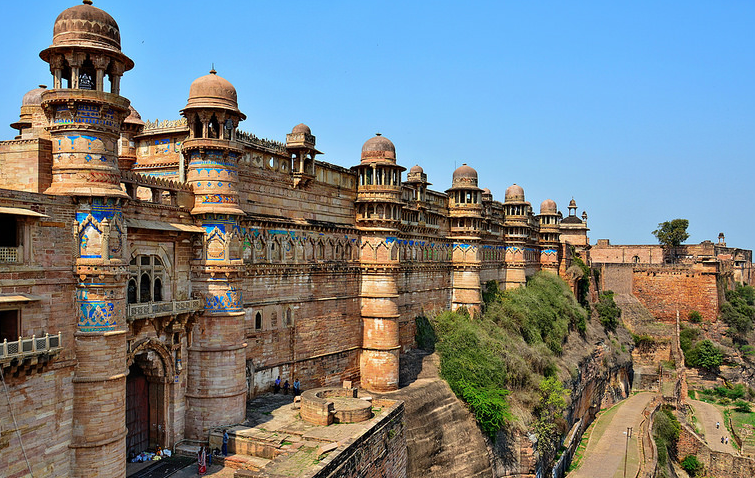
Raja Man Singh Palace Gwalior Fort, Photo: https://goo.gl/hkK0TH
Apart from housing the ancient temples, the Gwalior Fort also has in its store two magnificent palaces that draw attention of many. The more prominent of these two palaces is the ‘Raja Man Singh Palace’ known for its exquisite architecture and the ornate blue tile and mosaic work adorning its façade and outer walls. Built by Raja Man Singh Tomar in the 15th century, the palace, undoubtedly, speaks of the brilliant artistic skills of the artisans and architects of the bygone era. If you are visiting this palace, make sure to attend one of the country’s best sound and light shows that recreates the magic of love between Raja Man Singh Tomar and his wife, Mrignayani. The backdrop of this illuminated palace just adds to the hypnotic charm of the show that takes all its visitors in a complete awe. Another fascinating palace in the fort compound is the ‘Gurjari Mahal’, again built by Man Singh Tomar for his Gurjar queen, Mrignayani who was the love of his life. The palace has now been converted into an open air archaeological museum where one can have a glimpse at an impressive collection of historical artefacts, sculptures, carvings and frescoes, some of which are even more than 1000 years old.
Impressive Jain rock sculptures
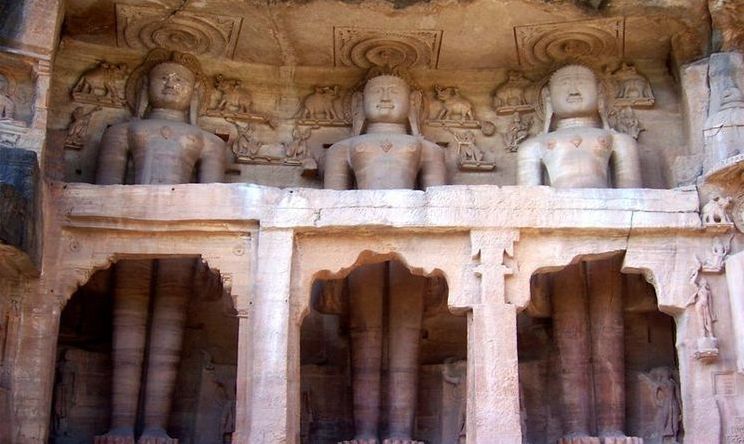
Jain rock sculptures, Photo: https://goo.gl/NniUxK
Located along the path leading to the ‘Urwahi Gate’ of the Gwalior Fort on the Southern side, you will come across scores of exquisite and ancient rock cut sculptures that date back between the periods of 7th century and mid-15th century. Carved in the vertical sandstone cliffs along the fortress walls, these imposing sculptures of Jain Tirthankaras stand tall in their full glory and will definitely make you appreciate the brilliant carving skills of the artisans and craftsmen of the bygone era. The most brilliantly carved of all the figures in this ‘Urwahi Group’ is the 17 metres tall figurine of Lord Adinath, the first Tirthankar and founder of the Jain religion. Besides the sculptures flanked along the ‘Urwahi Gate’, many impressive sculptures can also be seen on the eastern and south-eastern sides of the Gwalior Fort. Sculpted in different standing and sitting meditative postures, these statues give you a deep insight into the ancient Jain art that existed in India hundreds of years back. In spite of having been invaded by the army of the Mughal emperor, Babur in 1527 and not been impacted much by the harsh weather conditions, these sculptures even today, boast of their charismatic splendour that works as a magnet for numerous historians, archaeologists, artists and Jain pilgrims across the world, who visit these historical figurines just to witness their aura and magnificence.
Spiritually erotic temples of Khajuraho
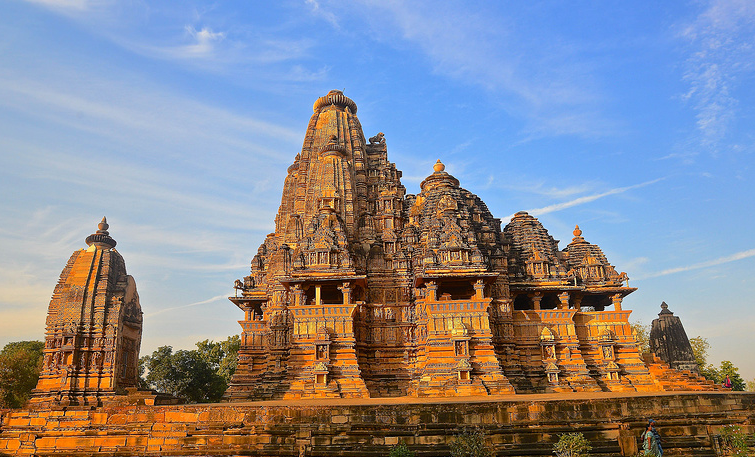
Temples of Khajuraho, Photo: https://goo.gl/UXRjLz
Famed world-wide for their exquisite carvings of erotic figures dating back to the era between 900 and 1130 AD during the reign of the Chandela dynasty, the Khajuraho group of temples are on the top of the itineraries for all the tourists planning to visit Madhya Pradesh in central India. As per the historical evidences, there were as many as 85 temples but, today only about 20 of these remain, out of which the ‘Kandariya Mahadeva Temple’ is the most prominent and a brilliant piece of architecture standing tall as a testimony to the exceptional artistic skills of the then artisans and craftsmen. While most of these temples are dedicated to Hindu deities, few of them are also devoted to Jain pantheon. Adorning the temple’s inner and outer walls, are the sculpted figures of celestial nymphs and mithunas depicting various sexual positions and sensuous poses. According to an analytical study, these erotic sculptures reveal a dominant role of women in the ancient Indian society. The beauty and poise of women depicted in these sculptures celebrate womanhood and indicates to the fact that the ancient society of India regarded women as the finest creation of God. Having always awed all the visitors with their stunning architectures and elaborate carvings, these temples have been a subject of study for many historians and scholars trying to find a connect between spirituality and human sexual desires. According to a latest theory, every human being is exposed to myriad of worldly desires with an appetite for sex being the most dominant. Only the ones who are able to transcend these worldly desires can attain self-realization and progress to a spiritual plane.
Standing as a monumental evidence to the love life culture of ancient India between 10th and 12th centuries, the Khajuraho temples are a ‘must visit’ when you are on the central India tour.
Land of Holkars, Indore
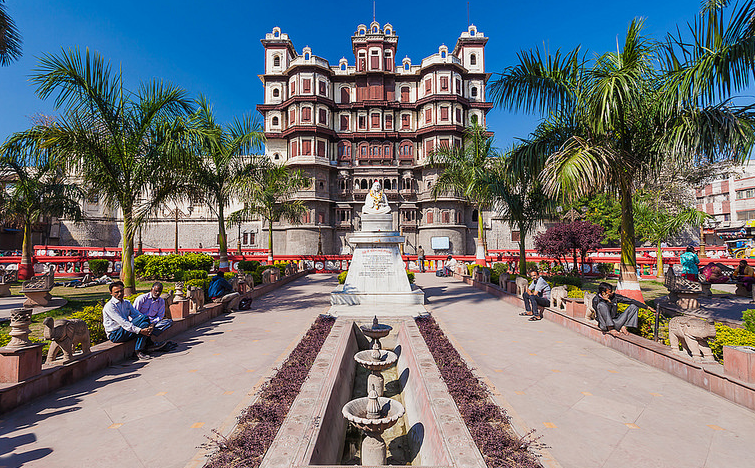
Rajwada Palace, Photo: https://goo.gl/DvcNnN
The largest city of Madhya Pradesh, Indore is rich in history and architecture. Also known as the commercial capital of the state, the city is definitely on the travel maps of tourists visiting Madhya Pradesh. Indore flourished during the reign of Holkar dynasty and was at its peak of glory under the rule of Malhar Rao Holkar in 18th century when several monuments were added to the city. Most famous of all the monuments in Indore is the ‘Rajwada Palace’ that speaks the tales of its glorious past. Built about two centuries ago, Rajwada stands tall in the city centre and treats you with a unique blend of Hindu-Rajputana, Mughal and European styles of architecture. The palace faced a substantial destruction owing to a massive fire in 1984, due to which only the front portion of the palace remains today. It got renovated in recent times with an addition of a beautiful garden and fountains in its rear part.
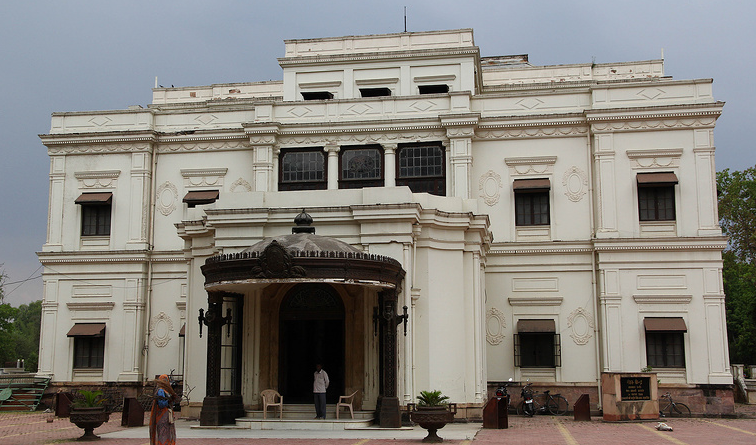
Lal Baag Palace, Photo: https://goo.gl/XX8Gw7
Besides Rajwada, the monument that grabs attention of all the tourists is the famous ‘Lal Baag Palace’ built in an Indo-European style of architecture. With its every inch reflecting a highly westernized outlook, it gives you a deep insight into the regal taste of Holkars. Adorned with contemporary Italian marble work, Belgium stained glass windows, ostentatious chandeliers and Italian wall paintings; a visit here will leave you spellbound with the extent of luxury it stores in its heart. The major part of the palace has today, been converted into a museum and is maintained by the Archeological Department of Madhya Pradesh.
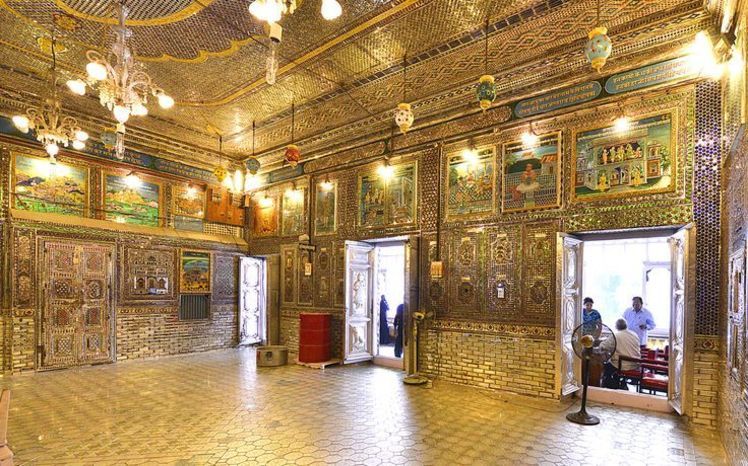
Kanch Mandir, Photo: https://goo.gl/O8yIg1
During your visit to Indore, you just cannot miss the splendid ‘Kanch Mandir’, the temple entirely made of thousands of glass and mirrors. Built in the early 20th century by Seth Hukumchand, it is basically dedicated to Lord Mahavir, the founder of Jainism and attracts both Jain pilgrims and tourists. An exemplary piece of art, the temple leaves you mesmerized with its beauty and exquisiteness.
Ancient city of Maheshwar
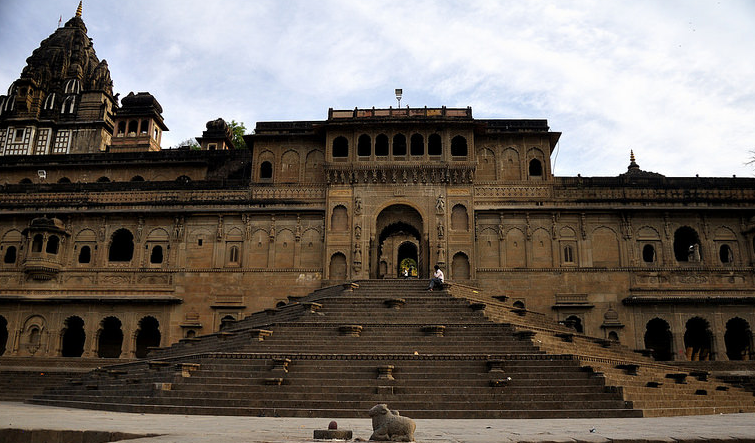
Ahilya Fort, Photo: https://goo.gl/BX6YWf
Located on the banks of the holy Narmada River, Maheshwar is a 4000 years old town in Madhya Pradesh that once served as the capital of the Malwa Kingdom. This small town enjoyed its golden period under the legendary queen, Ahilya Bail Holkar who ruled the kingdom during the 18th century. Rani Ahilya Bai was the daughter-in-law of Maharaja Malhar Rao Holkar (the founder of the Holkar kingdom of Indore) and is well known for her great diplomatic and administrative skills. Trained in military matters, she herself led armies in the battles protecting her kingdom from Muslim invaders. She was also a patron and builder of many Hindu temples that dotted the cities of Indore and Maheshwar. Besides building temples in her own kingdom, she also got renovated, many important Hindu shrines and temples across India, the Kashi Vishwanath Temple of Varanasi, being one of them.
The ‘Ahilya Fort’ built during the 16th century, is the primary attraction of the historical town of Maheshwar. During the reign of Ahilya Bai, she got a palace and numerous temples added to the fort. The palace served as the residence to the queen and was also the administrative headquarters of the Holkars. Today, the palace has been converted into a heritage hotel and makes for a great accommodation option in the town. During your visit to the fort, you can take a stroll around the courtyard and palace that is open to public. The life-size statue of Rani Ahilya Bai sitting on her rajgaddi or the royal throne in the courtyard, makes for an excellent site to get yourself a picture clicked with this legendary queen of her times, who left no stones unturned for the wellbeing of her subjects; the Rehwa society established by the Holkar royal family, still supports the local Maheshwari saree weavers with the profits. When in the fort complex, do not miss a visit to the small beautiful temple with exquisite stone carvings adorning its walls and ceiling.
Ruins of Mandu

Jahaz Mahal, Photo: https://goo.gl/k0vKp9
A city that stands as a testament to the beguiling tales of love between the poet Prince Baaz Bahadur and his beloved, Rani Roopmati, Mandu was founded in the 10th century by the Parmar rulers of Malwa in the west of Madhya Pradesh. Changing hands amid many Afghan rulers between the periods of 14th and early 16th centuries, it was during this time when the city reached its pinnacle. In the late 16th century, the city came into the hands of Mughal rulers. One of the best places to visit in central India, Mandu today, boasts of its exotic ruins of palaces, reservoirs and tombs. The most impressive and famous of the tourist attractions in Mandu is the splendid ‘Jahaz Mahal’, built by Ghiyas-ud-din Khilji during early 15th century. Known to be a pleasure seeker, Ghiyas-ud-din Khilji had a large harem of almost 15000 women for whom he got this palace made. Located inside the walled Mandu fort, the palace stands tall at a height of 110 metres on a narrow strip of land between two artificial lakes, Munj and Kapur Talao, giving it an impression of a floating structure on water and hence, the name ‘Jahaz’ (ship).

Hindola Mahal, Photo: https://goo.gl/VluX3r
Another interesting site in the city is the ‘Hindola Mahal’ also known as the ‘Swinging Palace’. Again, built in the late 15th century under the reign of Ghiyas-ud-din Khilji, it is the sloping side walls of the palace that gives its visitors an illusion of the palace been swaying. The architectural simplicity and minimalistic ornamentation makes this palace stand apart from other monuments in the city.
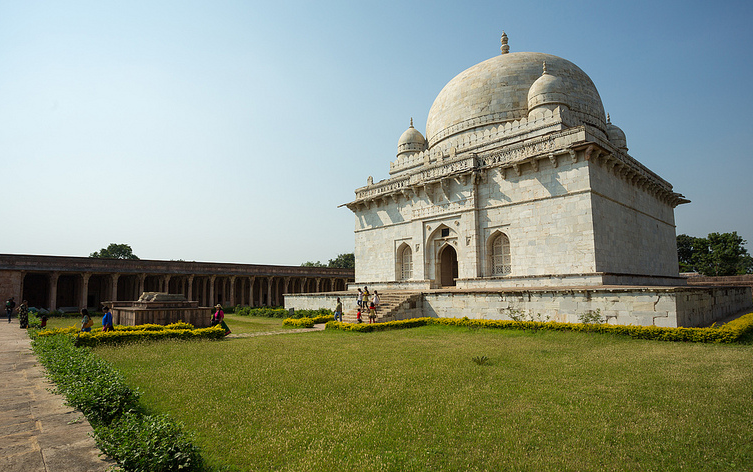
Hoshang Shah’s Tomb, Photo: https://goo.gl/hJ1EeX
The ‘Hoshang Shah’s Tomb’ is yet another great site to visit in Mandu. The first marble structure of India with brilliant lattice work, it is the architecture of this tomb that inspired the design of ‘Taj Mahal’, which was built centuries later. The tour of the city remains incomplete without visiting the ‘Roopmati’s Pavillion’ that brings to life, the immortal tales of love between her and her beloved, Prince Baaz Bahadur. Overlooking the serene waters of the Narmada River, the pavilion served as a retreat for her private time with the prince. The pavilion also overlooks the ‘Baaz Bahadur’s Palace’ that is perched atop a hill slope with beautiful surroundings. Baaz Bahdur was the last sultan of Malwa and reigned between 1555 and 1562 before succumbing to defeat in the hands of Mughal ruler, Akbar. It is believed that after his defeat, the prince fled leaving behind Roopmati. When the news of Baaz Bahadur fleeing, reached the ears of Roopmati, she committed suicide by consuming poison.
The heart-breaking tales of the tragic love story still resonate in the breathtakingly beautiful ruins of Mandu. One of the fascinating central India travel destinations, Mandu certainly makes for a perfect day trip.
Medieval town of Orchha

Orchha Fort, Photo: https://goo.gl/kAX6L5
Located on the banks of Betwa River in Madhya Pradesh, Orchha is another prominent historical destination in Central India. The town once served as the capital of Bundelkhand during the rule of Bundela Rajput kings and is today, well known for its ancient temples and palaces that still retain their artistic grandeur. The little city is dotted with many historical sites that make for a real treat to history buffs and curious travellers keen in knowing about the glorious past of the town.
When in Orchha, you can start your city tour by visiting the ‘Orchha Fort Complex’ that dates back to the 16th century and houses three beautiful palaces. The ‘Jehangir Mahal’ within the fort complex is its primary highlight and was built by Raja Bir Singh Deo to honour the visit of the Mughal emperor, Jehangir. Built in a Rajput-Mughal styles of architecture, the palace consists of several rooms, courtyards and hanging balconies providing panoramic views of the Betwa River. The delicate lattice work on its windows and striking chhatris (cenotaphs) also adds to the charm of this stunning citadel. The other famous tourist attraction within the fort complex is the ‘Raj Mahal’, built by Madhukar Shah and is one of the oldest historic monuments in the city. While the exteriors of the palace are plain and simple with few cenotaphs, the interiors adorned with brilliant mural paintings, depicting a variety of religious themes, leave all its visitors spellbound. The ‘Rai Parveen Mahal’ is yet another interesting site to visit in the fort complex. Built for the musician & poetess, Rai Parveen, the love of Raja Indramani, the palace boasts a classic Mughal style of architecture with well-manicured gardens and pathways. The second storey of the palace with its walls adorning the scenes of dancers in different dance postures, is truly a feast for eyes.

Ram Raja Temple, Photo: https://goo.gl/VArrjV
After spending few hours in the fort complex, tourists can make way to the ‘Ram Raja Temple’ that is situated right in the heart of Orchha. Dedicated to Lord Rama, the temple was originally built as a palace for the queen of Madhukar Shah. It was then, when the idol of Rama, temporarily installed in the palace proved impossible to move, the palace was converted into the temple. The temple today, continues to bustle with pilgrims and tourists who come here to pay their obeisance to Lord Rama, worshipped as king. Located south of the Ram Raja Temple, is the ‘Chaturbhuj Temple’, the original site where the deity of Lord Rama was to be enshrined. But, when the idol could not be moved from the Ram Raja palace, the deities of Radha-Krishna were enshrined in this temple. The exquisite architecture and heavily ornamented exteriors of the temple with carvings of various religious motifs, stand as a testimony to the architectural legacy of the bygone era. Visited by several devotees from far and wide to seek divine blessing and eternal happiness, the temple is today, one of the prominent travel attractions in Orchha. Yet another beautiful temple in the town is the ‘Laxmi Narayan Temple’ that showcases a unique mix of temple and fort architecture. Dedicated to Goddess Laxmi, the temple is mostly visited for its exquisite frescoes and murals painted in vibrant colours.
Orchha’s 14 ‘chhatris’, the solemn memorials of the Orchha rulers, also warrant a visit when you are in the town.
Orchha is not just a city strewn with historical buildings, but, a place where every monument speaks stories of friendship, romance and betrayal. So, when visiting central India, make sure to take an excursion to this intriguing destination.
Prehistoric Buddhist city of Sanchi
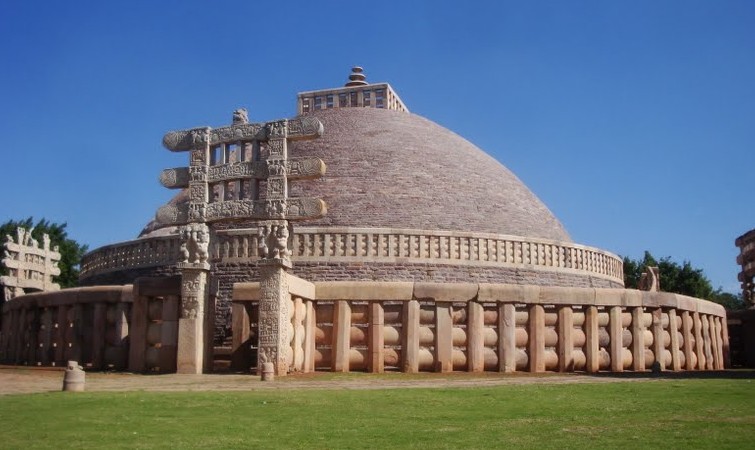
Sanchi Stupa, Photo: https://goo.gl/mO9RLq
One of the most ancient Buddhist cities in India, Sanchi is a small village located in Madhya Pradesh, known for its numerous stupas and other Buddhist structures. Besides the historical and archaeological significance of Sanchi, it also holds a great religious significance for many Buddhists. The ‘Great Stupa’, built in the 3rd century BC on orders of the Mauryan King Ashoka, is the primary attraction of the town today and is known to enshrine the old Buddha relics. Standing tall in its perpetual splendour, the stupa is considered to be the oldest stone structure in India and has also been ranked amongst the UNESCO World Heritage Sites. Originally built as a simple plain structure with half the diameter of the present hemispherical edifice, it was during the reign of Sunga dynasty that the stupa was enlarged in its size and was adorned with elaborately carved railings, stairways and harmika on the top. Again in 1st century BC, the Satavahana kings, presented the stupa with four beautifully carved gateways that added to the grandeur of the structure. The carvings on these gateways, depicting scenes from the early life of Buddha, his seven incarnations and Jataka tales today, stand as a testimony to the classical Buddhist art. Near the Stupa, one can also notice a fragment of the famous ‘Ashoka Pillar’ erected in 3rd century BC. Besides the Great Stupa, the ‘Stupa 2’ and ‘Stupa 3’ are also worth visiting during your trip to Sanchi. Towards Stupa 2, you will also notice a huge bowl carved from a monolithic black rock. Known as the ‘Great Bowl’, it is believed to have been a storehouse of food that was distributed to the resident monks of Sanchi.
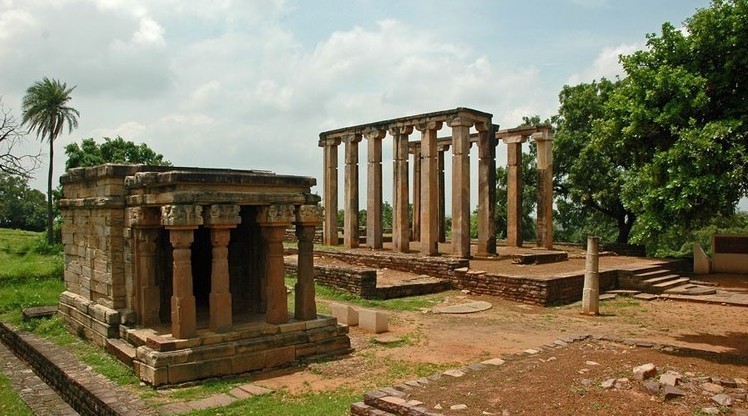
Gupta Temple, Photo: https://goo.gl/ZZVZKU
Sanchi flourished between the periods of 2nd and 12th centuries AD with Kushanas, Kshatrapas and finally Guptas taking over the rule. During this period, many more temples and monasteries came into existence, most of which lie in ruins today. The ‘Gupta Temple’ dating back to 5th century AD, is the best preserved monument in Sanchi today that speaks of the glory of the Gupta dynasty. Anyone visiting Sanchi, cannot miss a visit to this temple, which is also known as the symbol that marked the beginning of temple architecture in India. The architecture of the temple itself is quite small and simple as compared to many ancient Hindu temples found in South India. Dedicated to Lord Shiva, this temple also signifies a great harmony between the Buddhist and Hindu cultures that co-existed in ancient India.
The Buddhist land of Sanchi lay deserted for many centuries after the decline of the Gupta dynasty till it was rediscovered in 1818 by British General Mark Taylor. The restoration of this historical city commenced from 1912 till 1919 during which the important structures were repaired and restored. The archaeological society of India, also established a museum here showcasing the ancient artefacts found during the excavation of the region. Main highlight of this museum is the crown of the ‘Ashoka Pillar’ with its four lions seated back to back.
City of valiant queen Rani Lakshmibai, Jhansi

Jhansi Fort, Photo: https://goo.gl/qCBw1V
One of the most famous historical towns not only in Madhya Pradesh but, also in entire India, Jhansi is where the first war of Independence against British took place in 1857. It is the same town where India’s one of the greatest queens and freedom fighters, Rani Lakhshmibai attained martyrdom while fighting for the nation’s freedom. Dotted with numerous historical monuments, the city is no less than a treat for history freaks.
The most famous tourist attraction of the city is the ancient ‘Jhansi Fort’ built by the Bundel ruler, Raja Bir Singh Deo in 1613. Strategically perched on a rocky hill from where the movements of any invaders could be easily monitored, the fort also had 10 gates spread across the periphery of the city that had to be successfully crossed to enter its walls. After the fall of Bundel rule, the fort came under the rule of Marathas and finally under the British who ruthlessly demolished many important structures of the fort. During your visit to the fort, notice the three different styles of architecture namely Rajputana, Jain and Indo-Islamic styles that can be seen in its different structures. Though the fort is not as massive as other forts in India, it holds a special place in the history of the nation as this is the fort where the spark for India’s independence from the British Raj ignited. When you are in the fort, also notice its two canons, Khadak Bijli and Bhavani Shankar that are still deployed inside and were used by Rani Laskhmibai during the war with British. One of the significant grounds for the Indian freedom struggle where Lakshmibai showcased the deeds of heroism, the fort today, stands as a living testimony of courage, valour and bravery. 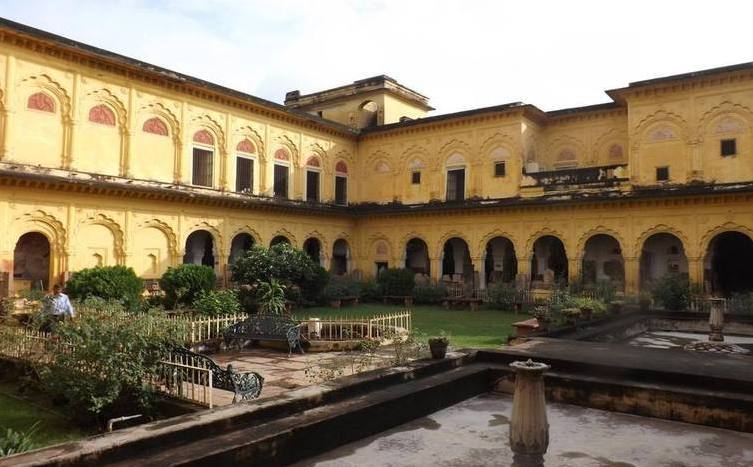
Rani Mahal Jhansi, Photo: https://goo.gl/ND47od
Near the Jhansi Fort is the ‘Rani Mahal’ from where Rani Lakshmibai controlled the administration of Jhansi. It is where she listened to the petitions of the common people of the city, passed judgements and punished the guilty. It is also the place where Laskhmibai, Tantya Tope and Nana Sahib worked on plans and strategies against the British. The palace has now been converted into an archaeological museum where one can get a glimpse at a brilliant collection of priceless artefacts dating back to the Gupta, Pratihara and Chandela periods. The Darbar Hall of the palace is worth noticing with its walls adorning beautifully coloured paintings exhibiting floral and faunal motifs.
One of the most important historical places in central India that gave birth to many prominent freedom fighters of India, a visit here will definitely leave you enlightened with the role that Jhansi played in shaking the foothold of British in India.
Ancient ruins of Pawaya
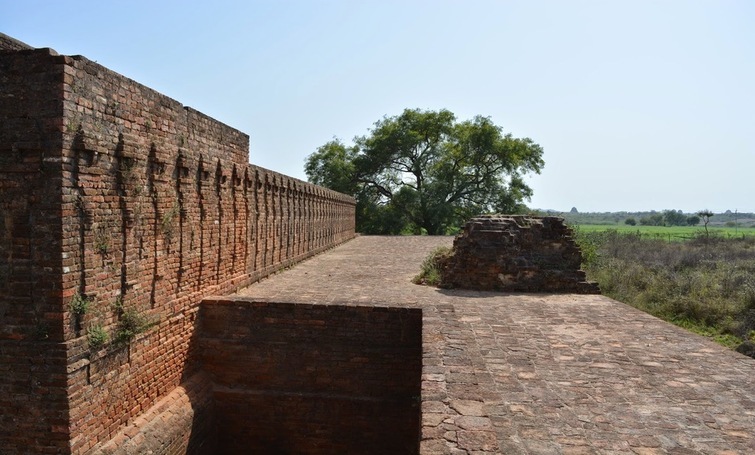
Pawaya, Photo: https://goo.gl/bpqKcE
Pawaya is a small village located at a distance of around 70 kilometres from the popular tourist town of Gwalior in Madhya Pradesh. The village is believed to be located at the same spot where once, the ancient city of Padmavati was located. The name of this ancient city of Padmavati was found in many classical Sanskrit texts that described the city to be lined up with rows of tall mansions and temples with the city’s location to be somewhere on the confluence of the Para and Sindhu Rivers.
As per the legendary melodrama of Bhavabhuti’s love story of Malati and Madhava, the romance between the two characters was described to flourish in the backdrop of the beautiful city of Padmavati where tall shikharas, exquisite temples, beautiful gardens adorned with trees of Kadamb and crystal clear lakes blooming with lotuses; added to the pristine charm of the city. The city was also described to be surrounded with thick forests and beautiful rivers, Sindh, Para, Mahuar and Nun to be flowing in the vicinity. There are also few notable touches of a picturesque waterfall on the Sindh, a tantric cult temple and a holy site dedicated to Lord Shiva in this ancient text.
Besides the poetic drama of Bhavabhuti, several ancient Vedic texts also described this beautiful city which intrigued many historians to search for the city’s actual location. It was in 1915-1916 that Mr. M V Lele, a renowned historian of his times, succeeded in identifying Padmavati with Pawaya. The excavations carried out at Pawaya under the lead of archaeologist, M B Garde in 1924-25, 1933–34 and 1941, confirmed to the correct identification of the city.
The ruins of Padmavati in Pawaya are spread over an area of around two square miles and are protected by the archaeological society of India. One reaching the excavated site, you can get a glimpse at the ruins of a ‘Gupta age temple platform’ that totally stands deserted today. The size of the platform truly indicates at the magnificence of the entire temple that still needs to be excavated. One can also see the bricks jutting out from the underground. Many fragments of stone sculptures, terracotta images and coinage of the Naga Kingdom from the Pawaya excavation site are housed in the Gurjari Mahal of Gwalior Fort.
Pawaya, does not find its name on a conventional tourist map and is seldom visited by tourists. Unfolding many silent pages of an era that is now lost, a visit to this small village definitely warrants a visit if you have keen interest in history.
Prehistoric rock shelters of Bhimbetka
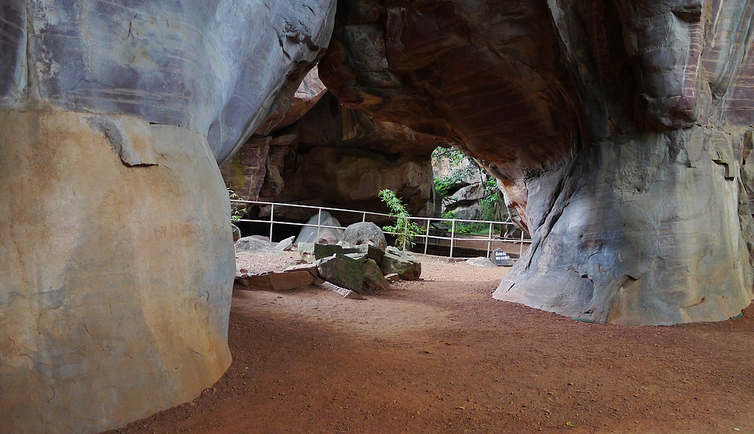
Bhimbetka rock shelters, Photo: https://goo.gl/sSbG7J
Nestled in the foothills of the Vindhya Mountains in the Raisen District of Madhya Pradesh, lie hidden, numerous clusters of natural rock shelters or caves with ancient rock paintings dating back to approximately 30000 years or even more. One of the most archaeologically significant sites in India, these rock shelters and paintings clearly indicate towards the earliest traces of the Stone Age era on the India subcontinent. Ensconced amidst dense forests and craggy cliffs, these caves were discovered in 1957 by Dr. Vishnu Wakankar, a passionate archaeologists of his times, when he was exploring the area and accidentally came across this treasure of pre-historic Indian art. Then, began the series of excavations that brought to limelight, many rock art paintings belonging to the Palaeolithic and early medieval eras. One can find the scenes of hunting, fighting soldiers, communal dances, men drinking and animal fights depicted on the walls and ceilings of the caves. The paintings of animals like tiger, bison, wild boar, elephants and peacocks can also be noticed. These paintings today, give a deep insight into the social life and activities of humans of pre-historic era. The scenes of hunters equipped with bows & arrows, spears etc. also give a clear picture of the types of weapons used by these nomad people in earlier times. With all the paintings executed in red, white, green and yellow also make you wonder how the pre-historic men must have discovered the ways of creating colours from combining different natural elements like manganese, red sandstones, leaves, vegetables and fruits.
Ranked amongst the UNESCO World Heritage Sites, Bhimbetka today, invite hordes of tourists including historians, archaeologists and chroniclers from across the globe. If you are planning a trip to Central India and archaeological discoveries interest you, make sure to keep Bhimbetka on your travel itinerary.
Originally chosen site for Taj Mahal, city of Burhanpur
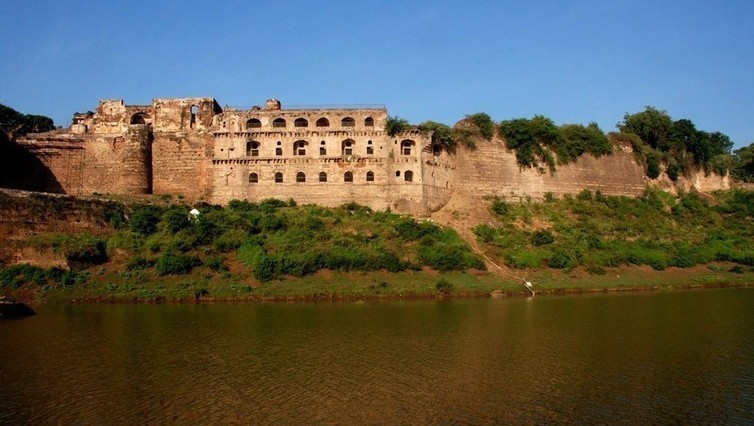
Shahi Qila Burhanpur, Photo: https://goo.gl/gjK6Lm
Located on the north bank of Tapti River in Madhya Pradesh, Burhanpur is a small historic town in central India, which was discovered during late 14th century by the Sultan of Khandesh who gave the city its name. Under the reign of Khandesh dynasty, many palaces were built in Burhanpur and it also emerged as a major textile hub. In 1601, city got in the hands of Mughal Emperor, Akbar. Even under the rule of Mughals, Burhanpur saw many additions of beautiful palaces and monuments that today, stand as a testament to its glorious past. After the decline of Mughal control in the region, the town came under Marathas and subsequently under British in 1818. The remnants of Mughal opulence and its great architectural importance lures thousands of tourists every year, especially history buffs and art lovers.
While there are many historical sites of attraction for tourists in the city, the monument that impresses its visitors the most is the majestic ‘Shahi Qila’, built during the reign of Shah Jahan. Though a major portion of the fort is in ruins today, a stroll through it, is sure to give you a feel of its majestic opulence during the bygone era. Primary highlight of the qila is the ‘Zenana Shahi Hammam’, the royal bath that was built for Mumtaz Mahal, wife of Shah Jahan to enjoy luxurious bath. Adorned with exquisite carvings and painted frescoes, most of which are carefully preserved till date, provide you an insight into the excellent skills of the then artisans. Right opposite the fort, is the ‘Ahukhana’ or the deer park which was the favourite hunting ground for Shah Jahan. The enclosed garden consists of a tank, a pleasure house and a covered elevated platform which is believed to have housed to tomb of Mumtaz Mahal for 6 months before being shifted to her final resting place at Taj Mahal in Agra.

Asirgarh Fort, Photo: https://goo.gl/uAUUGp
For anyone travelling to Burhanpur, an excursion to the ‘Asirgarh Fort’ definitely warrants a visit. Perched atop the Satpura Hills, the fort was built strategically to regulate control over Southern part of India and that is the reason it also acquired the name of ‘Dakkhan ka Darwaza’ or ‘Gateway to South’. Built by the Khandesh rulers in 1400, the fort today, stands as one of the most magnificent forts of India and is visited by hundreds of tourists travelling to central India. Inside the fort, you can see an ancient Shiva temple and a mosque built from black stone.
While majorly Burhanpur remains a historical town, it also makes for an important pilgrimage destination for Bohra Muslims and Sikhs. ‘Dargah-e-Hakimi’ built under the reign of Akbar is one of the most beautiful tomb complexes in India with a mosque, well-manicured gardens and world-class accommodation facilities. The mosque is a prominent religious destination for people of Dawoodi Bohra community who visit here to pay respect to their spiritual guru, Syedi Hakimuddin, who lies buried in the tomb complex. The 400 years old ‘Burhanpur Gurudwara’ in the city contains religious book of ‘Guru Granth Sahib’ and weapons of Guru Gobind Singh Ji, making this site a prominent pilgrim destination for Sikhs who come here from different parts of India and abroad.
Cultural town of Chanderi

Chanderi Fort, Photo: https://goo.gl/iWs8OT
Chanderi is an eminent historic and cultural town located in the valley of Betwa River in Madhya Pradesh. The city is believed to be existent from the Vedic times with its name mentioned in the Mahabharata as the kingdom of King Shishupal. Surrounded with lofty hills and lush forests, the modern Chanderi has in its store, ample historical monuments that were presented to it by the Malwa Sultans and Bundela Rajputs during their reigns in the region. Besides its historical monuments, the city and its surroundings are also replete with scores of ancient Jain temples that make it a prominent pilgrim destination for Jains. Chanderi also finds a special name on world’s textile map as being the hub for exquisite handwoven Chanderi silk and brocade.
For every tourist visiting Chanderi, the city tour must start with the ‘Chanderi Fort’ dating back to the Mughal era. Located at a commanding height on top of a hill, the approachable enemy forces could be easily monitored through this fort. The entry to the fort is through the ‘Khooni Darwaza’ that stands tall till date. According to historical records, the gate derives its name from a bloody battle between Babar and Medni Rai, which took place in 1528. The battle was so gruesome that the blood of the soldiers came flowing up to this gate and hence, giving it this name.
Near the entrance of the fort, you will find a small and impressive structure of a mosque built during the reign of Babur. The walls and pillars of this mosque are intricately carved with various patterns and verses of holy Quran.
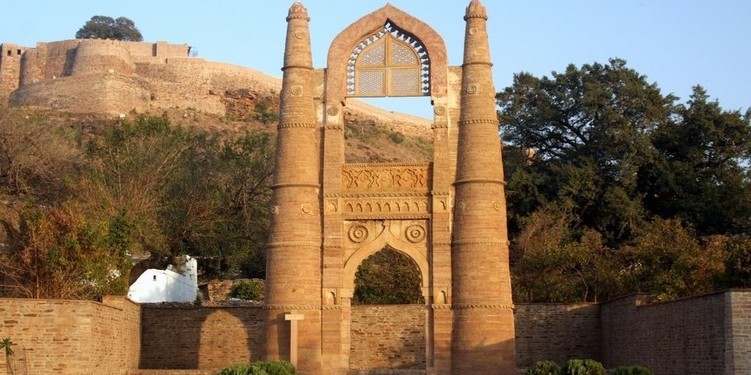
Badal Mahal Gate, Photo: https://goo.gl/Kvdrx7
Another most famous and photographed monument of Chanderi is the ‘Badal Mahal Gate’. Not sure why it is called a gate because as per historians, it is neither a gate nor a palace. It is an independent standing structure with two towering minarets joint by a beautifully carved arch with an intricate jali work on its top. According to local legends, this is where the famous singer Baiju Bawra used to sing welcoming the visitors to the fort and every time he sang, rains blessed the city. The picture of this iconic gate can also be seen on the postal stamps of Chanderi and also, on the stamps of the state’s Handloom Department.
Located few kilometres from the Chanderi town is the ‘Boodhi Chanderi’ or ‘Old Chanderi’, hidden amidst a dense forest. The remnants of ancient Jain temples dating back to 10th and 11th centuries can still be seen at this place. Various broken idols and stone inscriptions also lay scattered around the Boodhi Chanderi.
The town and its surroundings are a treasure trove of historical monuments and temples, a complete tour of which can take days to complete. So, when in Central India, make sure to visit this little gem of Madhya Pradesh.
Lost town of Chhattisgarh, Sirpur
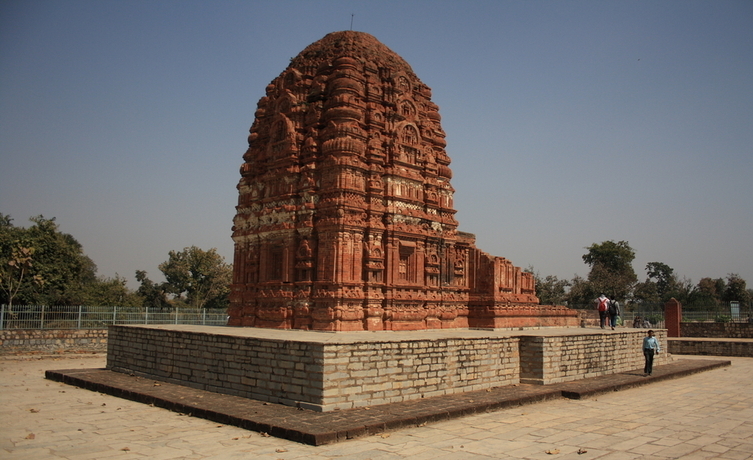
Lakshmana Temple Sirpur, Photo: https://goo.gl/3mVFL2
Located on the banks of Mahanadi River in Chhattisgarh, Sirpur is a small town with both, an archaeological and historical significance. Once an important Buddhist centre between 6th and 10th centuries AD, the town came into limelight for its ancient masterpieces of art only in recent years when the first round of excavations started here in the year 2000. Visited by hordes of travellers ranging from casual day-trippers to historians, archaeologists and art lovers, Sirpur today, finds one of the top places on the itineraries of many tourists in central India.
The most famous attraction of the town is the ‘Lakshmana Temple’ dating back to 7th century AD. One of the most well-preserved structures, the temple is dedicated to Lord Vishnu and makes its position amongst the finest brick temples of India. The ornamentally carved walls of the temple with scenes from Krishna’s raasleela and Vishnu’s seven incarnations, grab the attention of many.

Buddha Vihara Sirpur, Photo: https://goo.gl/o1vHKv
Another interesting site in Sirpur is the ‘Buddha Vihara’, one of the most recent discovery from the excavations. This Buddhist shrine is believed to be much larger is size than the vihara in Nalanda University of Bihar. Claimed to be dating back to the Gupta dynasty, the structure is a masterpiece with splendid carvings; the depiction of monkey and alligator story from Panchatantra beautifully carved is sure to leave you awed.
Besides the above two major attractions, Sirpur is replete with many more archaeological gems comprising of an underground granary market, an Ayurvedic treatment centre, Gandeshwar Temple, Balesvara Mahadeva Temple Complex and sculpture of the Lord Buddha in the ‘Bhumisparsh mudra’.
Forts of Bilaspur
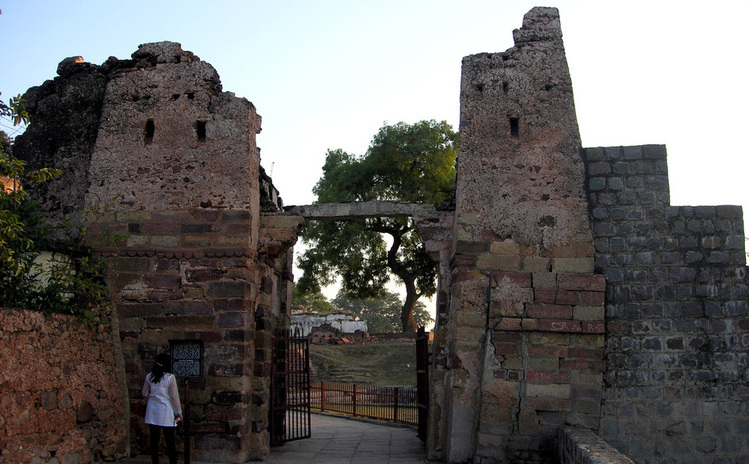
Ratanpur Fort Bilaspur, Photo: https://goo.gl/egbZQ0
Located on the banks of Arpa River in Chhattisgarh, Bilaspur is the second largest city of the state and a prominent tourist destination owing to plethora of historical monuments it stores. The city is also a major pilgrim destination with many ancient temples in its vicinity. For history buffs, it is the abundance of historical forts that lures them to this small town. While most of the forts stand in ruins today and are not very well-known, there are few of them which interests ardent historians. The ‘Ratanpur Fort’ is the most prominent of all the forts and lies at a distance of 25 km. from Bilaspur. Dating back to the 11th century, it was built by King Ratnadev but, today major part of it stands in remnants. Apart from the ‘Ratanpur Fort’, ‘Fort Bahadurpur’ and ‘Fort Sariun’ also interest many keen explorers.
Hope the above list of sites and destinations give you a sneak peek into India’s rich historical and architectural heritage. Please do write to us if you have any comments, suggestions or queries.
Published: 23 May, 2016
As a tour manager at TourMyIndia.com, Anil Rana has helped his clients in exploring the Indian wildlife and cultural heritage. His love for travel has imparted him immense knowledge of Indian wildlife, cultural heritage, leisure destinations. To help travellers all across the world, he loves to pen down his experiences and wisdom about cultural, wildlife and leisure travel in India.






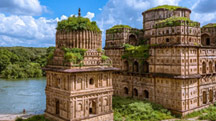 15 Nights / 16 Days
15 Nights / 16 Days 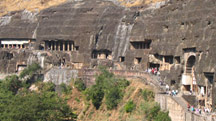 16 Nights / 17 Days
16 Nights / 17 Days 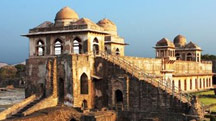 3 Nights / 4 Days
3 Nights / 4 Days  2 Nights / 3 Days
2 Nights / 3 Days 





























